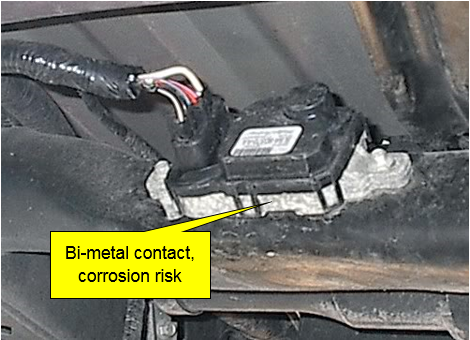Integrated Systems Modeling: The value of multi-domain engineering…

Siemens PLM recently announced an integrated systems modeling solution–Systems Modeling Workbench for Teamcenter that creates integrated product architectures in Teamcenter.What’s the value of integrated multi-domain engineering and the cross product digital thread it creates?

You may have read the press release about the recent launch of the integrated System Modeling Workbench for Teamcenter (as well as Siemens Obeo/Capella partnership).In prior blogs we talked about the value of an integrated product architecture and it’s importance to driving organizations towards an integrated solution by providing the blue prints/glue needed for multi-disciplinary teams to create an integrated solution (i.e. start integrated, stay integrated).
The value of integrated models…
So what’s the value of an integrated system modeling solution (vs. an disintegrated/disconnected system modeling tools)?One important value of integrated system modeling is the cross-product links that provide the altitude needed to see the cross-domain implications/impacts of change/design decisions.In complex cross-domain products today that impact isn’t fully understood which means decisions/change are made without fully comprehending the possible consequences—leading to integration problem escapes.For example in the automotive industry there was some 31 million recalls on vehicles in the US during 2017, down from a record 55 million from the prior year (the odds are good you were effected by one or more of these especially the Takata Airbag recall).The National Highway Traffic Safety Administration (NHTSA.gov) estimates it costs ~$100/recall per vehicle, which means that some $3.1 billion dollars was spent last year in direct costs related to recalls.
 Sample recall test question #1If you look at some of these recalls, you will note many of them happen at the discipline/domain boundaries which makes it difficult to spot them inside organization/domain boundaries and why many of them escape.Let’s see if you can spot the problem on this recall–>
Sample recall test question #1If you look at some of these recalls, you will note many of them happen at the discipline/domain boundaries which makes it difficult to spot them inside organization/domain boundaries and why many of them escape.Let’s see if you can spot the problem on this recall–>
No? Because of the placement of the drive selector near the radio, drivers accidently turn off the vehicle when they reached over to turn on/off the radio—turning off the car while moving is dangerous; disabling safety systems, locking steering wheel, etc. There were about 13,500 vehicles with this defect, using NHTSA’s cost figure, that’s $1.35 million to correct. .
Integration problems are easy to see after you’ve experienced them…
After pointing out the cross-domain relationships (or if you actually experienced it), the problem becomes obvious, but wouldn’t it be great if you could see it before it turned into a recall and all the cost and risk to life that go with it. (see prior discussion about rear-view mirror design vs forward design). During design, we’re not seeing these cross-domain problems (unless we’ve experienced them before) because they happen at the product/discipline boundaries.Today’s mono-discipline/disconnected modeling tools can see issues within their discipline, but not the cross-discipline view you need to see the problems coming.
System Modeling Workbench for Teamcenter…
Siemens PLM is introducing integrated multi-domain system modeling for Teamcenter that:
- is part of the product lifecycle (participates in change, variation, workflow,…)
- establishes the relationships/digital thread needed for downstream/continuous validation; enabling continuous closed loop/cross-product V&V
- keeps organizations from repeating the same mistakes over and over
- creates/manages the cross-product relationships/digital thread that allows you to see the problems coming
…enabling you to start integrated, stay integrated vs. discovering problems late in the lifecycle
 Sample recall test question #2Let’s try another one. Let’s see if you can spot the problem–>
Sample recall test question #2Let’s try another one. Let’s see if you can spot the problem–>
No?Looking closer, you can see the back plate on the fuel pump control module is badly corroded.Bi-metal corrosion caused by mounting a zinc back-plated module in direct contact with a steel cross-member eventually causing the module to fail, fuel pump to stop working…This recall effected 86,000 vehicles, ~$8.6 million in direct costs.
Imagine instead a multi-domain/system model created digital thread was in place that crossed electrical, materials, reliability and mechanical 3D model domains and informed you of the cross-domain issues; even informing the designer of consequences at the time they are deciding whe Cross-product issues highlighted during designre to place the module!
Cross-product issues highlighted during designre to place the module!
 Cross-product Issues included in augmented VR/visualization
Cross-product Issues included in augmented VR/visualization
Of course, the sample recall numbers represent only the direct costs involved in cleaning up the mess of a problem escape, the indirect costs of inventory, opportunity costs, overnight shipping replacement parts, lost reputation, etc. easily eclipses those numbers.INCOSE MBSE Initiative recently sponsored an MBSE Lighting Round at the INCOSE International Symposium in July which I was invited to speak on ROI for MBSE; including many of the indirect costs that go along with mono-vision design decisions based on real world experience (see Allegory of the Humidifier).The 18 minute talk was recorded and available for playback on YouTube.It will give you a laugh, but may bring a tear to your eye when you recall your own humidifier experiences.
-Mark Sampson


